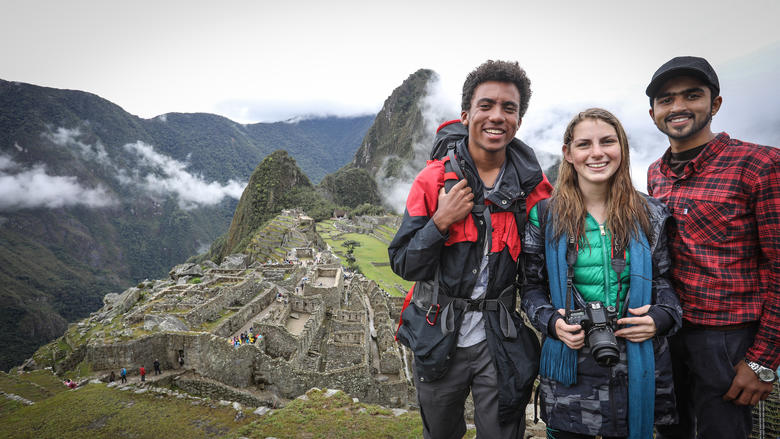– Click on picture to visit TGS site
Recently I was reading the case studies within The Global Educator book, By Julie Lindsay. I have mentioned this book in my previous blog posts and I have mentioned its worth when regarding global learning, collaboration, and education. Within the case studies, a specific study caught my attention because of its major impact on global collaboration and its potential major influence in education.
The case study focused on the THINK Global School, a unique and innovative school based in New York State that delivers a completely different type of education. More specifically this school takes over 60 students and 12 educators to four different parts of the globe during the school year. This school’s mission is to introduce global learning to the students in the best or most efficient way possible. They believe that by physically traveling the world and living in different areas can truly immerse a student to provide the best learning.
I was amazed and I feel that the idea is incredible and it seems like one of the best ideas to happen to education. Global education is incredibly important and this school realizes that global collaboration is vital to learning and the organization is doing their job at spreading the need for global learning.
A lot can be learned from this school and many of the aspects can be taken in order to provide similar global experiences to any classroom, especially those that may be limited. Think Global School or TGS puts emphasis on interacting with the rest of the world and gaining a global perspective. They also are open to all who want to apply and even provide financial aid for those who require it. Moreover, TGS being a private school does not defer its ability to diversify considering their major idea of traveling and exploring other cultures. They are at times negative ideologies about private school and their inability to appeal to all cultures, colors, and backgrounds and, like previously stated, this school is on the expensive side with tuition at over 80k, but I believe that the impact they are applying to the students who attend over compensates any amount of money to attend. There is a strong possibility that the students who attend this type of education will be one of the highest global thinkers and those who can cause change. These students and teachers have taken global learning to the next level and the school itself is becoming a symbol of what this world can be and what an educational ideology should be.
I feel that education is always changing and THINK Global School is trying something unique that may prove to be extremely beneficial for those involved and those around the world that is witnessing the process. This does not mean normal or traditional schools cannot achieve greatness or make an impact in the world. That being said this is what global education is all about communicating with each other to see what education format or procedures are best for our students and what to do and not to do.
What do you guys think? os TGS a great idea? is a bad idea? please comment below.
While you’re thinking about THINK Global School, check out some of these videos posted to TGS Youtube page
As always thank you for following my blog post, There will be more posts to come as I continue my education to become a teacher, I will post on my stuggles, my qeustions, my insights and anything else that comes my way.
Thank you.







